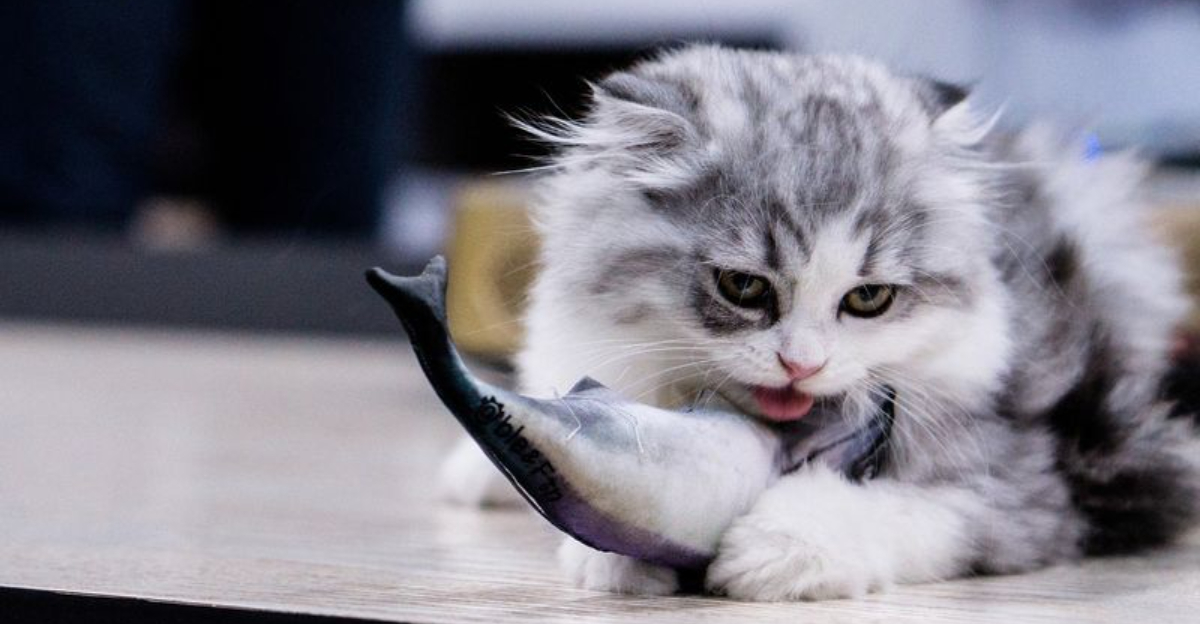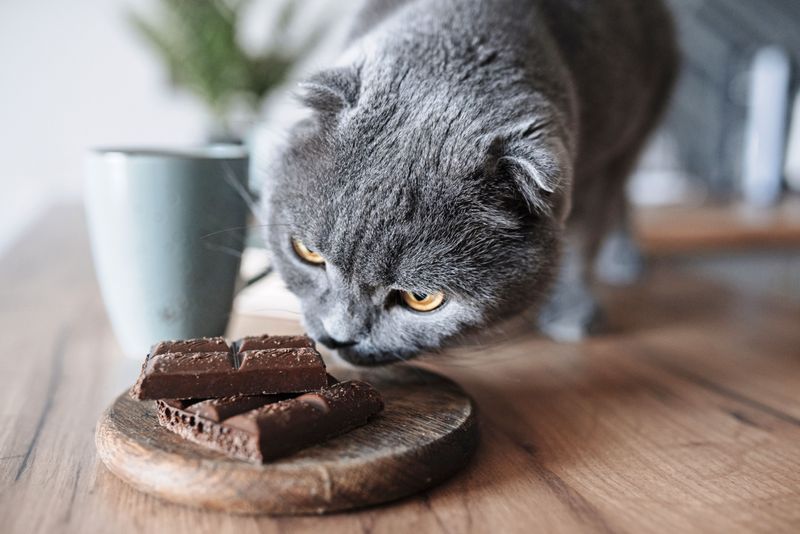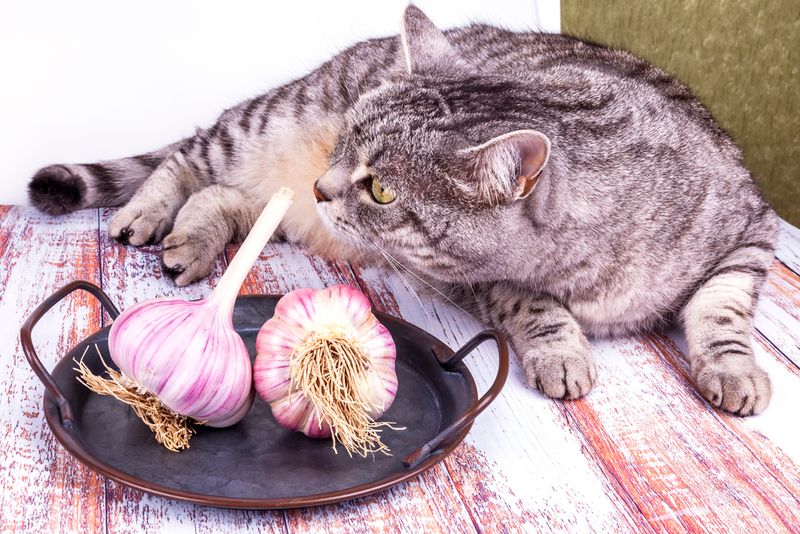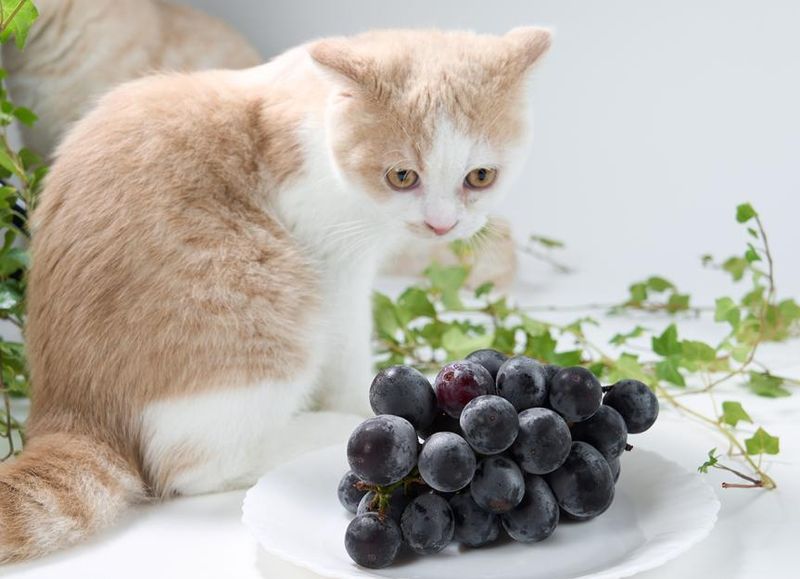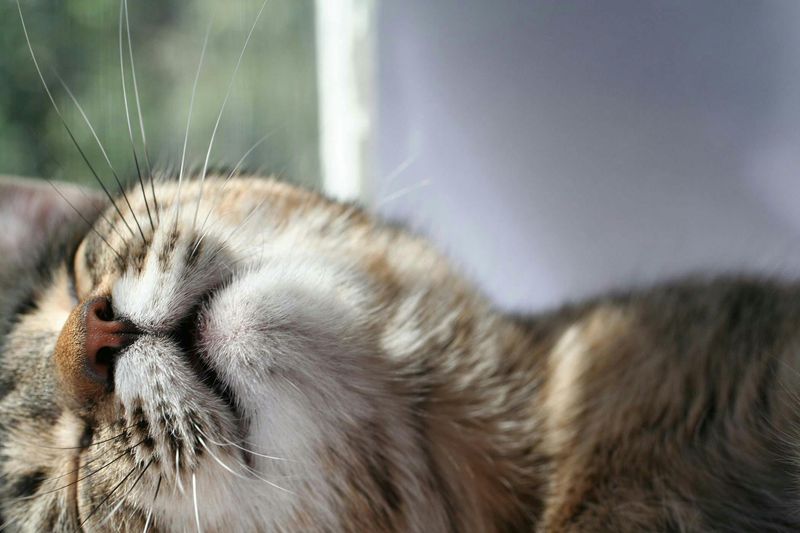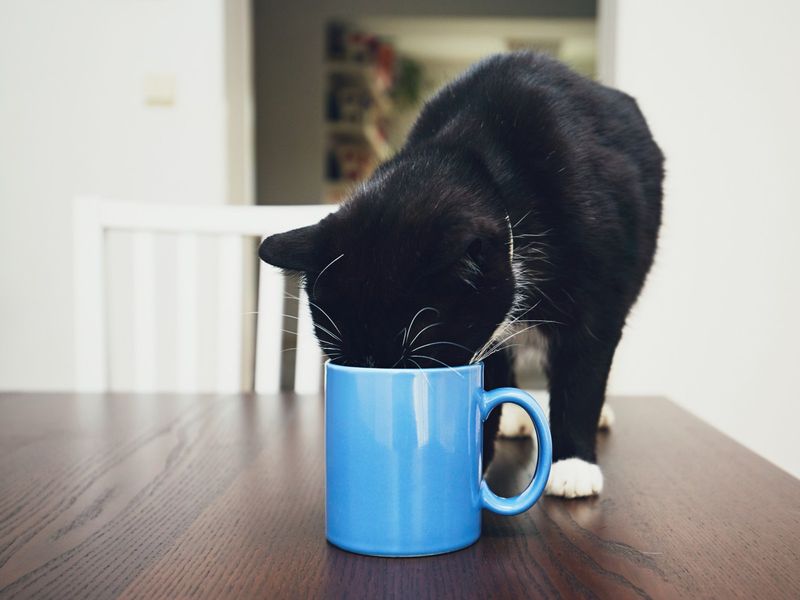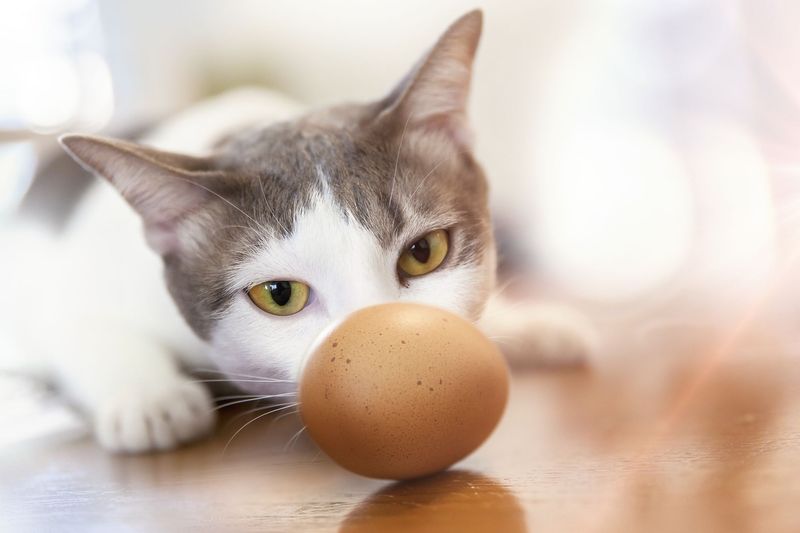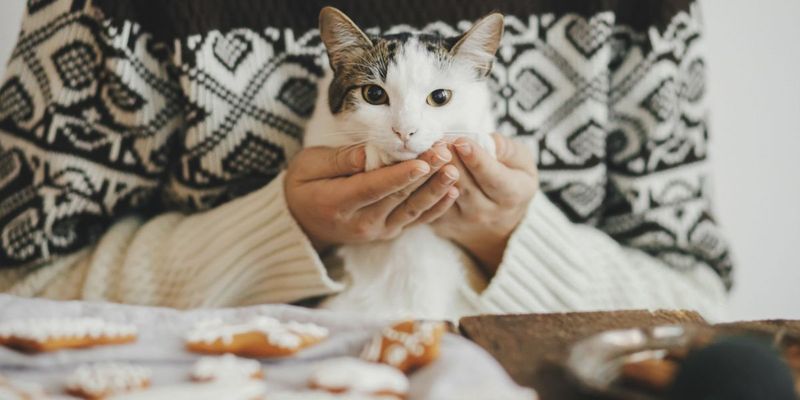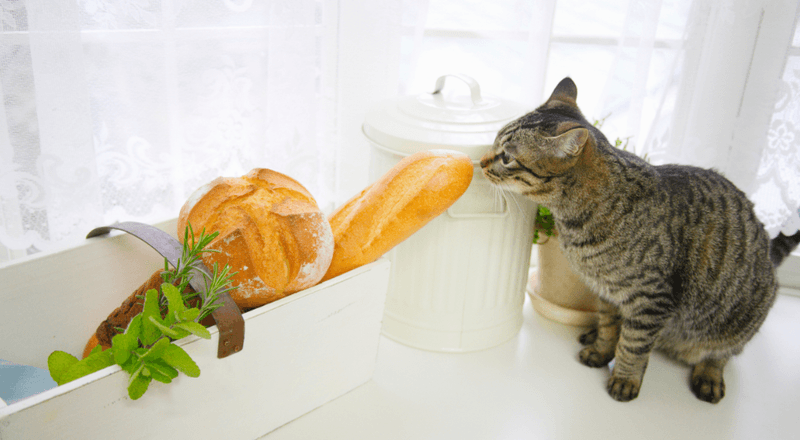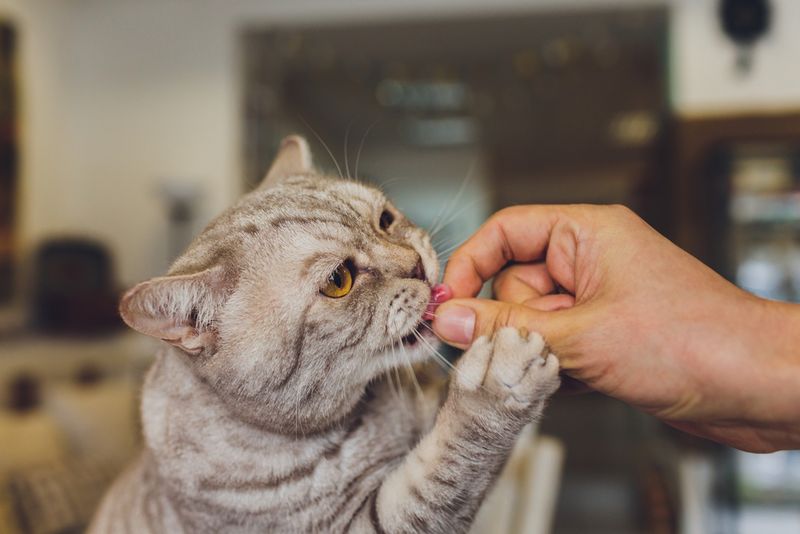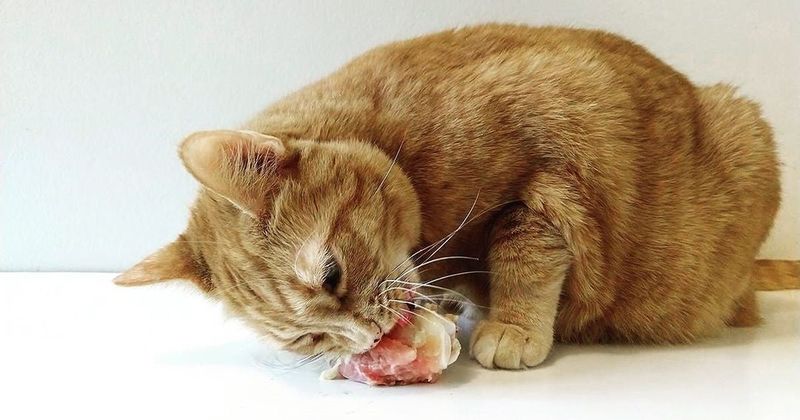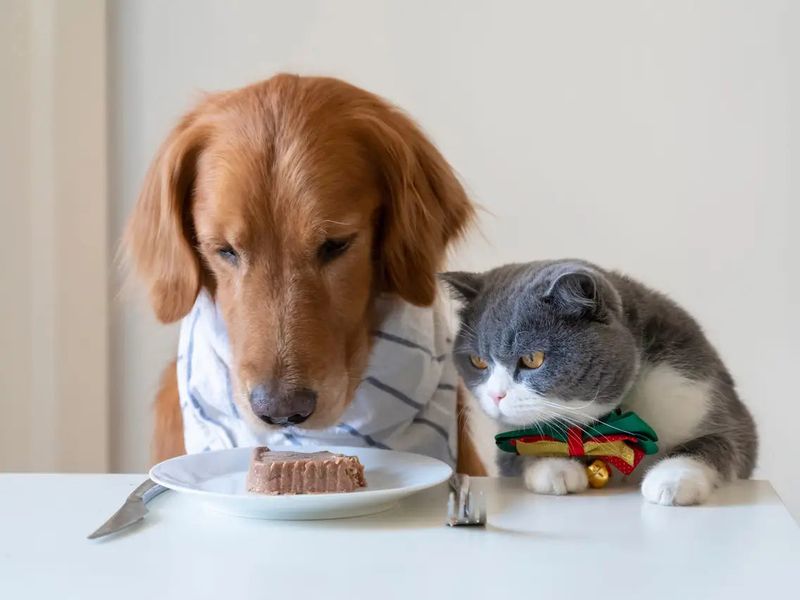📖 Table of Content:
Curious cats often find human foods irresistible, leading them to sneak bites whenever possible. Their persistent begging can make it challenging to keep them away from the dinner table. Despite the temptation to share, many everyday foods pose hidden dangers to feline health.
Certain foods that seem safe or even nutritious for humans can be harmful or toxic to cats. Their digestive systems process ingredients differently, making some common treats risky. Recognizing these dangers is essential to preventing accidental poisoning or illness.
Being aware of which foods are off-limits helps protect cats from unnecessary harm. Proper knowledge ensures that feline companions stay healthy and safe. Avoiding these toxic treats is a vital part of responsible pet care.
1. Chocolate
Cats rarely seek out chocolate on their own, but some curious felines might be attracted to this sweet treat if it’s left within reach. Chocolate contains theobromine and caffeine, compounds that cats cannot metabolize effectively.
Even small amounts can cause vomiting, diarrhea, increased heart rate, and seizures. Dark chocolate and baking chocolate are the most dangerous due to their higher theobromine content. If your cat ingests chocolate, contact your vet immediately as this can be life-threatening.
Keep all chocolate products stored securely, especially during holidays when chocolate treats are abundant around the house.
2. Onions and Garlic
The scent of onions and garlic often draws cats in, particularly when mixed with protein-rich foods like chicken or fish, yet because these vegetables are part of the Allium family, they carry substances harmful to feline red blood cells.
Regular consumption can lead to hemolytic anemia, where red blood cells are destroyed faster than they can be made. Signs include weakness, lethargy, pale gums, and decreased appetite.
Both raw and cooked forms are dangerous, and even onion or garlic powder in small amounts can cause problems. Be careful with baby foods containing these ingredients when feeding a sick cat.
3. Raw Fish
The classic image of a cat lapping up a bowl of milk or raw fish is actually promoting unhealthy habits. Raw fish contains an enzyme called thiaminase that destroys thiamine (vitamin B1), an essential nutrient for cats.
Thiamine deficiency can develop quickly, leading to neurological problems including seizures, head tilts, and even death if untreated. Some fish also contain high levels of mercury or may harbor parasites that can infect your cat.
If you want to treat your feline friend to fish, make sure it’s thoroughly cooked and served in moderation without seasoning or oils.
4. Dairy Products
While many cats go wild for cream and milk, drinking it with obvious pleasure, adult cats often cannot digest these dairy products well because they lose the enzyme needed to break down lactose after their early months.
When cats consume milk, cheese, or ice cream, they often develop digestive upset including diarrhea, vomiting, and uncomfortable gas. The fatty content in dairy can also lead to pancreatitis in sensitive cats.
For cats who crave that creamy texture, look for specially formulated lactose-free cat milk available at pet stores, or offer a small amount of plain yogurt with active cultures which is easier to digest.
5. Grapes and Raisins
The small size and rolling motion of grapes might trigger a cat’s hunting instinct, making these fruits an attractive plaything before becoming a snack. Scientists haven’t identified exactly what makes grapes and raisins toxic to cats, but the results can be devastating.
Consumption can lead to sudden kidney failure, with symptoms including vomiting, lethargy, and decreased urination. Some cats seem more susceptible than others, with reactions occurring from even a single grape.
Always keep fruit bowls out of reach and be careful with foods containing raisins like certain breads, cereals, and baked goods that might appeal to your curious cat.
6. Alcohol
Drawn by curiosity, cats sometimes lick from abandoned glasses, unaware that alcohol, even in small doses, can be very harmful to their fragile bodies.
A few licks of a cocktail can lead to alcohol poisoning, causing vomiting, disorientation, high body temperature, seizures, and in severe cases, respiratory failure. Their livers cannot process alcohol efficiently, making even small amounts potentially deadly.
Never leave alcoholic beverages unattended around cats, and be aware that some foods like rum-soaked cakes or wine-based sauces also contain enough alcohol to be harmful.
7. Caffeine
The warmth of a coffee or tea cup might attract cats seeking cozy spots, potentially leading to accidental consumption. Caffeine affects the central nervous system and heart, causing restlessness, rapid breathing, heart palpitations, and muscle tremors in cats.
Coffee grounds, tea bags, energy drinks, and chocolate-covered espresso beans all pose serious risks. Even medications containing caffeine can be dangerous if accessible.
The severity of poisoning depends on the amount ingested and the size of your cat, but as little as a large sip of coffee could cause concerning symptoms. Always secure caffeine products and clean up spills immediately.
8. Raw Eggs
The scent of raw eggs, rich in protein, may draw curious cats when left momentarily unattended, yet these eggs carry two important dangers to feline health that are frequently ignored.
First, they may contain Salmonella or E. coli bacteria that can cause severe food poisoning. Second, raw egg whites contain avidin, a protein that binds to biotin (vitamin B7) and prevents its absorption, potentially leading to skin problems and coat deterioration over time.
Cooked eggs served plain in small amounts can actually be a healthy protein source for cats, providing all the nutritional benefits without the risks associated with raw consumption.
9. Xylitol
Found in sugar-free gum, candies, baked goods, and even some peanut butters, xylitol might not seem like something cats would seek out. However, foods containing this sweetener can accidentally end up in a curious cat’s mouth.
Xylitol causes a rapid release of insulin in cats, resulting in dangerously low blood sugar levels within minutes to hours. Symptoms include vomiting, loss of coordination, seizures, and liver failure.
Check ingredient lists carefully, especially if you use peanut butter as a medication delivery method for your cat. Store products containing xylitol in secure cabinets where determined paws can’t reach them.
10. Raw Dough
Bread dough left to rise on countertops can attract cats with its yeasty smell. If eaten, the warm environment of a cat’s stomach becomes the perfect place for the dough to continue expanding, causing painful bloating and potential intestinal blockage.
The fermentation process also produces alcohol as a byproduct, leading to alcohol poisoning with symptoms like disorientation, vomiting, and lethargy. The double threat of physical expansion and alcohol production makes raw dough particularly dangerous.
Keep rising dough in closed containers or areas completely inaccessible to pets, and clean up any small pieces that might fall to the floor during preparation.
11. Tuna (Human Grade)
The potent aroma and taste of human-packaged tuna usually excite cats, yet frequent feeding of canned tuna designed for people may lead to significant health problems over time.
Human-grade tuna lacks the proper balance of nutrients cats need and contains too much mercury for regular consumption. Feeding it frequently can lead to malnutrition, vitamin E deficiency (steatitis or yellow fat disease), and mercury poisoning.
Additionally, cats can develop an addiction to tuna, refusing their regular balanced diet in favor of this tempting treat. Limit tuna to occasional small treats, and choose cat-specific tuna products when possible.
12. Fat Trimmings
Many cat owners fall into the trap of sharing fatty meat trimmings with their begging pets. The rich, savory smell of fat trimmed from steaks, chops, or roasts proves irresistible to most cats, who will eagerly gobble up these seemingly harmless treats.
Fatty foods can trigger painful pancreatitis, an inflammation of the pancreas that causes vomiting, abdominal pain, and lethargy. Both cooked and raw fat can cause digestive upset, but cooked fat is particularly problematic.
The high calorie content also contributes to obesity and related health issues like diabetes and joint problems. Save your cat from these risks by properly disposing of fat trimmings.
13. Bones
The fact that wild cats eat small bones from their prey often convinces owners to offer chicken or fish bones, but cooking makes these bones brittle and likely to splinter into hazardous fragments.
These splinters can cause mouth injuries, can get lodged in the throat, or puncture the digestive tract as they move through the system. Even small bone fragments can cause constipation or intestinal blockages requiring emergency surgery.
Raw bones pose fewer splintering risks but may harbor dangerous bacteria. Instead of bones, satisfy your cat’s chewing instincts with specially designed dental treats or toys made specifically for feline teeth.
14. Dog Food
Intrigued by the different aromas, cats often investigate dog food bowls, yet although a small taste won’t cause immediate harm, dog food does not provide the specific nutrients required for feline health.
Cats need higher levels of protein, certain amino acids like taurine, and specific vitamins that dog food formulations don’t provide in sufficient amounts. Long-term consumption can lead to malnutrition, heart problems, vision issues, and dental disease.
Feed pets in separate areas and pick up dog food after meals to prevent feline sampling. For multi-pet households, consider elevated feeding stations for dogs or cat-proof feeding areas to keep curious cats from making dietary mistakes.
15. Liver (In Large Amounts)
The strong aroma and rich flavor of liver make it highly appealing to cats, often causing them to beg persistently when they smell it cooking, but excessive feeding can lead to a dangerous condition known as vitamin A toxicity.
Excessive vitamin A accumulates in the liver and can cause bone and joint pain, brittle bones, and even bone growths on the spine and joints. Signs of toxicity include decreased mobility, neck or limb stiffness, and reluctance to jump or play.
Small amounts of liver as an occasional treat are fine, but never make it a dietary staple. Follow the 10% rule—treats should make up no more than 10% of your cat’s daily caloric intake.
